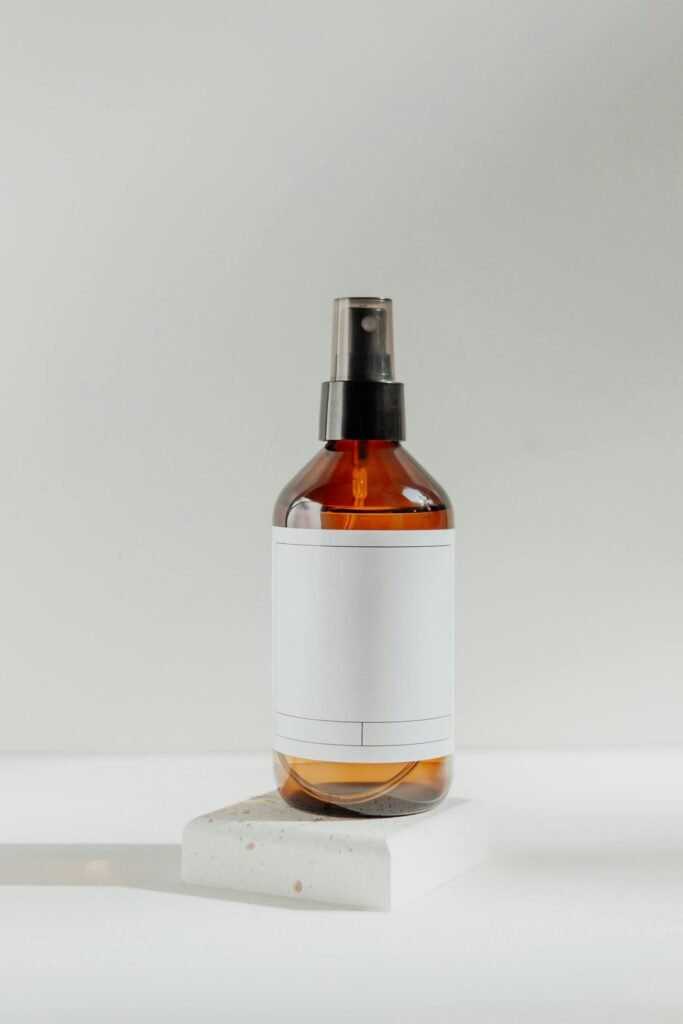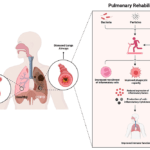
Pulmonary hypertension is a condition that affects the arteries in your lungs and can lead to serious complications if not managed properly. In this article, we will explore the best practices for dealing with this condition, from lifestyle modifications to medication options. Whether you or someone you know is living with pulmonary hypertension, understanding these practices can make a significant difference in maintaining a high quality of life. So, let’s dive into the world of pulmonary hypertension and discover the strategies that can help you effectively manage this condition.
Diagnosis
Physical examination
When it comes to diagnosing pulmonary hypertension, a physical examination plays a vital role. During this examination, your healthcare provider will listen to your heart and lungs with a stethoscope. They will be paying close attention to any abnormal sounds, such as a heart murmur or the sound of your lungs under strain. Additionally, they may check your extremities for any signs of swelling or clubbing, as these can often be indicative of the condition. This examination is an important initial step in determining whether further testing is necessary.
Echocardiography
Echocardiography is a non-invasive imaging test that uses sound waves to create a picture of your heart. It is a common diagnostic tool for pulmonary hypertension. During the test, a technician will place a small device called a transducer on your chest. This device emits sound waves that bounce off your heart, creating images that can provide valuable information about the size, shape, and function of your heart and its blood vessels. Echocardiography can help your healthcare provider assess the pressure in your pulmonary arteries and determine the severity of your condition.
Right heart catheterization
Right heart catheterization is considered the gold standard for diagnosing pulmonary hypertension. It involves inserting a thin, flexible tube called a catheter into a blood vessel in your neck, groin, or arm. The catheter is then threaded through the blood vessels and into your heart. This allows your healthcare provider to directly measure the pressure in your pulmonary arteries and assess the function of your heart. Right heart catheterization can provide precise and detailed information that is vital for diagnosing pulmonary hypertension and determining the most appropriate treatment options.
Treatment options
Medications
Medications are often a cornerstone of treatment for pulmonary hypertension. There are several different types of medications available, each targeting different pathways involved in the development and progression of the condition. Your healthcare provider will determine the most appropriate medication or combination of medications based on your individual circumstances. Medications for pulmonary hypertension can help improve symptoms, slow disease progression, and improve overall quality of life.
Lifestyle changes
In addition to medications, making certain lifestyle changes can also have a positive impact on pulmonary hypertension. It is important to maintain a healthy weight, as excess weight can strain the heart and worsen symptoms. Regular physical activity, as tolerated, can also be beneficial. Quitting smoking and avoiding exposure to secondhand smoke is crucial, as smoking can further damage the lungs and blood vessels. It is also important to manage stress and get plenty of restful sleep. Your healthcare provider can provide personalized recommendations for incorporating these lifestyle changes into your daily routine.
Pulmonary rehabilitation
Pulmonary rehabilitation is an important component of treatment for pulmonary hypertension. This comprehensive program typically includes exercise training, education, and support to help improve and maintain overall physical and emotional well-being. Exercise training can help improve exercise tolerance and reduce symptoms, while education programs can provide valuable information about managing the condition and improving overall quality of life. Pulmonary rehabilitation is often carried out under the supervision of a multidisciplinary team of healthcare professionals who specialize in pulmonary hypertension.

Drug therapies
Prostacyclin analogs
Prostacyclin analogs are a class of medications that mimic the effects of prostacyclin, a natural substance in the body that helps regulate blood vessel function. These medications work by relaxing and widening the blood vessels, thereby reducing the pressure in the pulmonary arteries. Prostacyclin analogs are usually administered through a continuous subcutaneous infusion or inhaled through a portable device. They can help improve symptoms, exercise tolerance, and survival in people with pulmonary hypertension. However, they can have side effects and require careful monitoring.
Endothelin receptor antagonists
Endothelin receptor antagonists are another class of medications commonly used in the treatment of pulmonary hypertension. These medications work by blocking the effects of endothelin, a naturally occurring substance in the body that causes blood vessels to constrict, leading to increased blood pressure. By blocking the action of endothelin, endothelin receptor antagonists help relax and widen the blood vessels, reducing the pressure in the pulmonary arteries. These medications can improve symptoms, exercise capacity, and delay disease progression. However, they can also have side effects and require regular monitoring.
Phosphodiesterase-5 inhibitors
Phosphodiesterase-5 inhibitors are a third class of medications used in the management of pulmonary hypertension. These medications work by inhibiting an enzyme called phosphodiesterase-5, which is responsible for breaking down a molecule called cyclic guanosine monophosphate (cGMP). By inhibiting this enzyme, phosphodiesterase-5 inhibitors increase the levels of cGMP, which promotes relaxation of the blood vessels and lowers the pressure in the pulmonary arteries. These medications can improve symptoms, exercise capacity, and quality of life. However, they can have side effects and require careful monitoring.
Surgical interventions
Lung transplant
In severe cases of pulmonary hypertension where other treatment options have been exhausted, lung transplant may be considered. This surgical procedure involves replacing one or both diseased lungs with healthy lungs from a donor. Lung transplantation can significantly improve survival and quality of life in carefully selected individuals. However, it is a complex procedure that carries risks and requires lifelong immunosuppressant medications to prevent organ rejection. The decision to undergo a lung transplant should be made in collaboration with a multidisciplinary team of healthcare professionals experienced in pulmonary hypertension and transplant care.
Atrial septostomy
Atrial septostomy is a less invasive surgical intervention that can be performed in certain cases of pulmonary hypertension. During this procedure, a small hole is created in the wall separating the two upper chambers of the heart (atria). This hole allows for improved blood flow and can help relieve some of the pressure on the right side of the heart. Atrial septostomy is typically reserved for individuals with severe pulmonary hypertension and right heart failure who are not eligible for or do not respond to other treatment options. This procedure can provide temporary relief of symptoms and improve overall quality of life.

Clinical management
Regular follow-up visits
After receiving a diagnosis of pulmonary hypertension, it is important to maintain regular follow-up visits with your healthcare provider. These visits allow for monitoring of your condition, assessment of treatment effectiveness, and adjustment of medications as needed. The frequency of follow-up visits will vary depending on the severity of your condition and your individual needs. It is important to actively participate in these visits by sharing any new symptoms or concerns you may have and asking any questions you may need clarification on.
Monitoring symptoms and side effects
In addition to regular follow-up visits, it is important to monitor your symptoms and any potential side effects of your medications. This can help you and your healthcare provider track the progress of your condition and make any necessary adjustments to your treatment plan. Keep a record of your symptoms, including their frequency, severity, and any specific triggers. Also, be aware of the potential side effects of your medications and report any new or worsening symptoms to your healthcare provider promptly. Open communication with your healthcare provider is key to managing pulmonary hypertension effectively.
Patient education
Understanding the condition
A crucial aspect of managing pulmonary hypertension is understanding the condition and its underlying mechanisms. Educating yourself about the causes, symptoms, progression, and available treatment options can empower you to make informed decisions and actively participate in your own care. Take the time to learn about the anatomy and function of the heart and lungs, as well as how pulmonary hypertension affects these systems. Ask your healthcare provider for recommended resources or educational materials to assist you in your learning journey. The more you know, the better equipped you will be to manage your condition effectively.
Self-management strategies
In addition to understanding the condition, implementing self-management strategies can greatly improve your overall quality of life with pulmonary hypertension. These strategies involve taking an active role in your own care and making choices that promote your health and well-being. Some self-management strategies that may be beneficial include following your treatment plan as prescribed, monitoring your symptoms and side effects, maintaining a healthy lifestyle, managing stress, seeking support from loved ones or support groups, and seeking medical attention promptly for any changes or concerns. Your healthcare provider can provide personalized guidance and recommendations for self-management based on your individual needs.

Supportive care
Psychological support
Living with a chronic condition like pulmonary hypertension can be emotionally challenging. It is not uncommon to experience feelings of anxiety, depression, frustration, or isolation. Seeking psychological support can be extremely helpful in managing these emotions and improving overall well-being. Consider speaking with a mental health professional who can provide guidance and support tailored to your specific needs. Additionally, reaching out to support groups or connecting with others who have experience with pulmonary hypertension can provide a sense of community and understanding.
Nutritional counseling
Proper nutrition is important for maintaining overall health and supporting the management of pulmonary hypertension. Working with a registered dietitian who specializes in cardiovascular health can help ensure that your diet is optimized to meet your individual nutritional needs. They can provide guidance on incorporating heart-healthy foods, such as fruits, vegetables, lean proteins, and whole grains, into your meals. They can also help you manage any dietary restrictions or considerations that may be necessary due to your medications or specific health needs. Good nutrition plays a crucial role in supporting your overall well-being.
Exercise and physical activity
Benefits of exercise
Engaging in regular physical activity can provide numerous benefits for individuals with pulmonary hypertension. By participating in approved exercise programs, you can improve your cardiovascular fitness, enhance muscle strength and endurance, increase energy levels, and enhance overall quality of life. Regular exercise can also help reduce symptoms such as shortness of breath and fatigue, as well as improve exercise tolerance. It is important to remember that exercise should always be tailored to your individual needs and capabilities, and carried out under the guidance of a healthcare professional experienced in working with pulmonary hypertension patients.
Safe exercise guidelines
Due to the unique challenges and risks associated with pulmonary hypertension, it is essential to follow safe exercise guidelines when engaging in physical activity. Your healthcare provider or a pulmonary rehabilitation specialist can provide specific recommendations tailored to your condition. Generally, exercise sessions should be low-to-moderate intensity, gradually building up duration and intensity over time. Activities that are gentle on the joints, such as walking, swimming, or stationary cycling, are often well-tolerated. It is important to listen to your body and modify or stop activity if symptoms worsen. Staying properly hydrated and avoiding extreme temperatures are also important considerations.
Pregnancy considerations
Pre-pregnancy counseling
Before considering pregnancy, it is important for women with pulmonary hypertension to have a pre-pregnancy counseling session with their healthcare provider. This session is an opportunity to discuss the potential risks and challenges associated with pregnancy, as well as develop a personalized plan to minimize these risks and optimize maternal and fetal outcomes. Your healthcare provider may recommend additional tests, adjustments to your medications, and close monitoring throughout the pregnancy. It is crucial to have open and honest communication with your healthcare provider to make informed decisions regarding pregnancy.
Monitoring during pregnancy
Pregnancy places additional strain on the cardiovascular system, and for women with pulmonary hypertension, this can present unique challenges. Throughout pregnancy, close monitoring by a multidisciplinary team of healthcare professionals experienced in managing pulmonary hypertension is crucial. This may include regular assessments of heart function, blood pressure, and oxygen levels, as well as fetal monitoring. Medication adjustments may be necessary to ensure maternal and fetal well-being. The goal is to maintain a balance between managing the mother’s health and providing optimal conditions for the baby’s development. Each pregnancy with pulmonary hypertension is unique, and individualized care is essential.
Research and advancements
Clinical trials
Ongoing research and clinical trials are continuously advancing our understanding of pulmonary hypertension and exploring new treatment options. Clinical trials offer a unique opportunity for individuals with pulmonary hypertension to contribute to medical knowledge and potentially access innovative therapies. If you are interested in participating in a clinical trial, speak with your healthcare provider to determine if there are any trials available that may be suitable for you. Participating in clinical trials can play a vital role in advancing the field and improving outcomes for individuals affected by pulmonary hypertension.
Emerging therapies
The field of pulmonary hypertension is continually evolving, and emerging therapies show promise in expanding the options available for treatment. These therapies may include novel medications, targeted therapies, or innovative procedures. It is important to stay informed about any advancements in the field by regularly consulting with your healthcare provider and staying up to date on the latest research. While emerging therapies may not be widely available at the current time, they hold the potential to provide additional benefits for individuals with pulmonary hypertension in the future.









